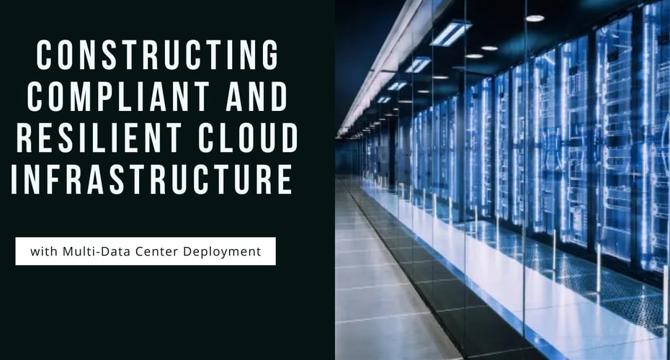Dev
3w
382

Image Credit: Dev
Constructing Compliant and Resilient Cloud Infrastructure with Multi-Data Center Deployment
- In 2025, the use of multi-data center strategies is crucial for global teams, SaaS platforms, and startups to achieve performance, compliance, and disaster recovery goals.
- Deploying across multiple data centers has become important to meet high standards for availability, performance, and compliance due to increasing user demands and global expansion of digital platforms.
- Compliance with data privacy and sovereignty regulations in different regions, like GDPR and PIPEDA, requires organizations to build infrastructure in multiple locations to handle data within jurisdictional areas.
- Multi-data center deployments help businesses stay resilient by preparing for potential failures, ensuring business continuity, and minimizing service interruptions during outages through configurations like Active-Passive and Active-Active.
- Reducing global latency and improving performance is achieved through multi-data center deployment, allowing companies to optimize workload placement, reduce round-trip times, and provide a faster user experience by placing infrastructure closer to end-users.
- Security is enhanced in a multi-data center environment by isolating data and workloads across regions, reducing risk exposure and adhering to best practices in zero-trust architecture.
- Cost-efficient scaling can be achieved with multi-data center deployment by selecting cloud providers with clear pricing, minimal egress fees, and automated workload placement, enabling teams to deploy globally without unexpected expenses.
- Automation and developer experience play a key role in multi-data center settings, providing tools for Infrastructure as Code, CLI, REST APIs, and monitoring, allowing teams to set up and manage infrastructure efficiently across locations.
- Real-world use cases demonstrate benefits for SaaS companies, fintech firms, media platforms, AI startups, and educational platforms utilizing multi-data center deployment for compliance, performance optimization, and global reach.
- In conclusion, multi-data center deployment has become the new standard in cloud infrastructure, offering compliance readiness, regional performance optimization, cost efficiency, and resilience to organizations of all sizes.
Read Full Article
23 Likes
For uninterrupted reading, download the app